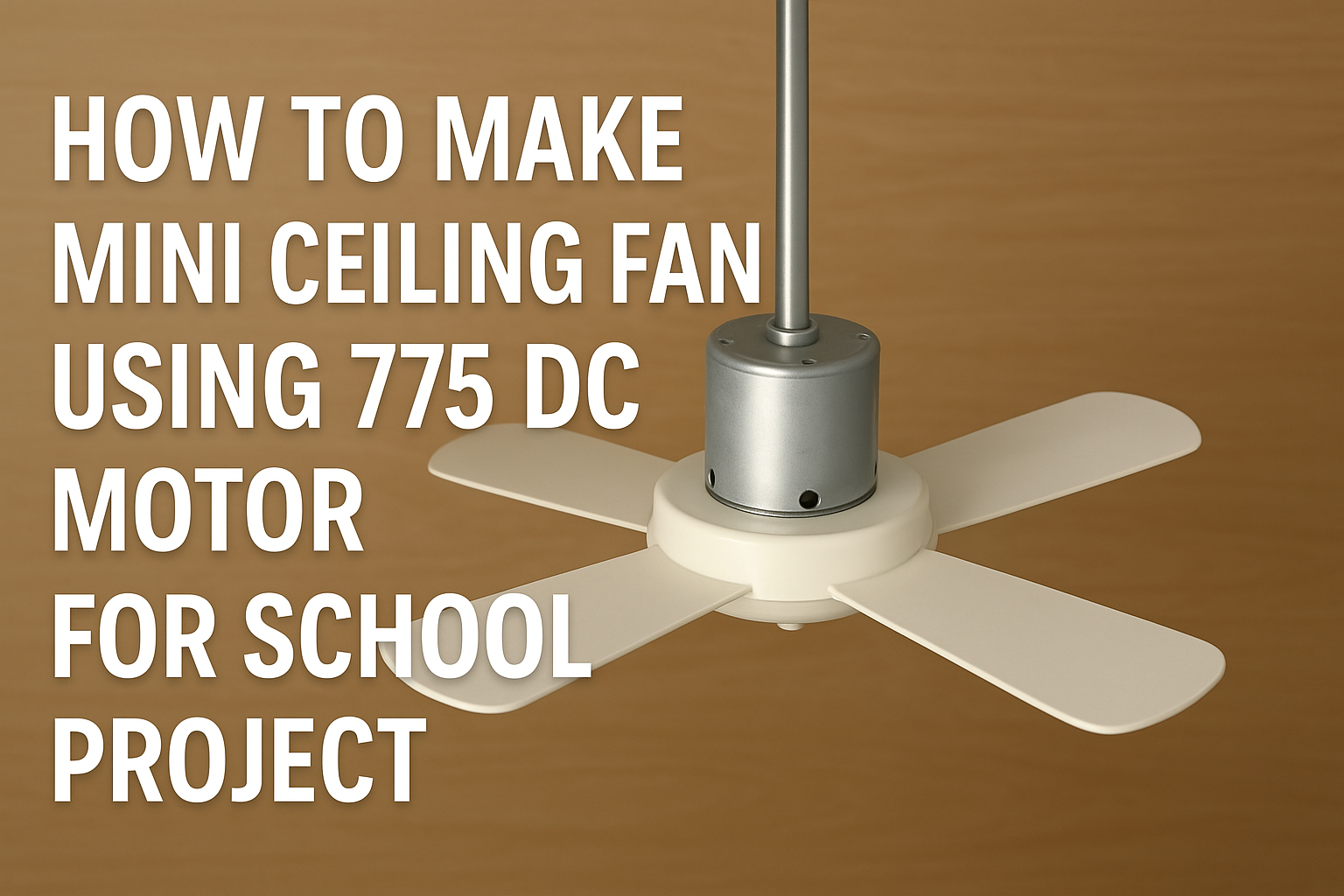How To Make Mini Ceiling Fan Using 775 DC Motor For School Project
Introduction
Have a science fair or school exhibition coming up? Building a mini ceiling fan using a 775 DC motor is a great project that’s fun, practical, and super impressive. Not only will it showcase your engineering skills, but it also helps you understand how motors and simple electronics work.

Materials Required
Basic Components List
- 775 DC Motor (12V preferred)
- Small fan blades (DIY or store-bought)
- Power supply (12V battery or adapter)
- Switch
- Wires
- Wooden or plastic base
- Screws and nuts
- Soldering kit or electrical tape
Safety Gear and Tools
- Safety goggles
- Screwdriver
- Drill (if mounting)
- Multimeter (optional but useful)
Understanding the 775 DC Motor
Key Features
The 775 motor is a high-speed, high-torque DC motor. It’s compact, powerful, and perfect for small machines or DIY projects like fans or drills.
Power Requirements
Most 775 motors run on 12V to 24V DC power. For this project, a 12V adapter or battery will do just fine.
Step-by-Step Assembly
Preparing the Base
Start by cutting a sturdy piece of wood or plastic that will hold your motor in place. Make sure it’s flat and stable.
Mounting the 775 DC Motor
Secure the motor in the center using screws or brackets. Make sure it doesn’t wobble.
Attaching the Fan Blades
Use plastic or cardboard to craft blades, then fix them on the motor shaft. A glue gun or small bolt works great here.
Electrical Wiring
Connect the wires to the motor terminals, and then connect a switch in between one of the wires for easy control.
Powering the Motor
Attach the wires to your 12V power source. Flip the switch and watch your fan spin into action!
Creating Fan Blades at Home
Materials You Can Use
Old plastic bottles, CDs, cardboard, or even ice cream sticks make great DIY fan blades.
Balancing and Testing the Blades
Make sure the blades are equal in size and weight. Test spin before connecting to power to ensure balance.
Mounting the Mini Fan
Ceiling or Stand Mount?
For ceiling-style, use a strong hook or clamp. For a stand version, attach a long rod or pipe to the base.
Ensuring Safety During Use
Never touch the blades while spinning. Always turn off power before adjustments.
Safety Tips While Handling DC Motors
- Never overload the motor.
- Use proper insulation on wires.
- Keep water and liquids far away from electrical parts.
Tips for Presentation
How to Explain the Working
Use simple terms like, “The motor converts electrical energy into mechanical energy to spin the fan blades.”
How to Troubleshoot Problems
- Fan not spinning? Check the power supply.
- Making noise? Blade imbalance.
- Overheating? Use a lower voltage or let it rest.
Advantages of Using DC Motors in School Projects
DC motors are cheap, easy to control, and great for teaching mechanical principles in a hands-on way.
Eco-Friendly and Budget-Friendly Aspects
This project uses recyclable materials and low power, making it both green and affordable.
Encouraging Creativity and Innovation
Let your imagination run wild—paint it, add lights, or even make a remote-controlled version!
Conclusion
Making a mini ceiling fan using a 775 DC motor isn’t just a fun school project—it’s a fantastic way to understand how motors work, apply engineering concepts, and show off your DIY talent. With a few simple tools and a bit of creativity, you’ll have a working model that spins heads—literally and figuratively.
Thank you very much visiting my website get more contenthttp://Click Here
